Kia Niro vs Mazda MX-30 – Which model is better for everyday use?
Compare performance, boot capacity, efficiency and price at a glance.
Find out which car is the better choice for you – Kia Niro or Mazda MX-30?
Costs and Efficiency:
Price and efficiency are often the first things buyers look at. Here it becomes clear which model has the long-term edge – whether at the pump, the plug, or in purchase price.
Kia Niro has a hardly perceptible advantage in terms of price – it starts at 29100 £, while the Mazda MX-30 costs 30800 £. That’s a price difference of around 1714 £.
As for range, the Mazda MX-30 performs evident better – achieving up to 85 km, about 23 km more than the Kia Niro.
Engine and Performance:
Power, torque and acceleration are the classic benchmarks for car enthusiasts – and here, some clear differences start to show.
When it comes to engine power, the Kia Niro has a minimal edge – offering 180 HP compared to 170 HP. That’s roughly 10 HP more horsepower.
In acceleration from 0 to 100 km/h, the Mazda MX-30 is hardly perceptible quicker – completing the sprint in 9.10 s, while the Kia Niro takes 9.90 s. That’s about 0.80 s faster.
In terms of top speed, the Kia Niro performs noticeable better – reaching 185 km/h, while the Mazda MX-30 tops out at 140 km/h. The difference is around 45 km/h.
Space and Everyday Use:
Whether family car or daily driver – which one offers more room, flexibility and comfort?
Both vehicles offer seating for 5 people.
In curb weight, Kia Niro is distinct lighter – 1474 kg compared to 1849 kg. The difference is around 375 kg.
In terms of boot space, the Kia Niro offers evident more room – 451 L compared to 350 L. That’s a difference of about 101 L.
In maximum load capacity, the Kia Niro performs clearly perceptible better – up to 1445 L, which is about 290 L more than the Mazda MX-30.
When it comes to payload, Kia Niro slightly takes the win – 466 kg compared to 402 kg. That’s a difference of about 64 kg.
Who wins the race?
The Mazda MX-30 proves to be barely ahead and therefore becomes our DriveDuel Champion!
Mazda MX-30 is the better all-rounder in this comparison.
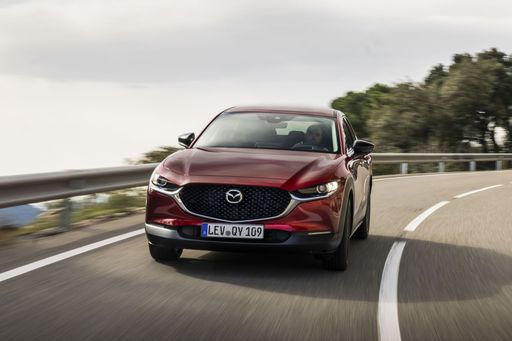
Mazda MX-30
Kia Niro
The Kia Niro presents itself as a versatile and eco-friendly SUV, blending a stylish design with advanced hybrid technology. Its spacious interior offers comfort and practicality, making it ideal for both city driving and longer journeys. With a focus on efficiency and sustainability, the Niro is a compelling choice for environmentally conscious drivers.
details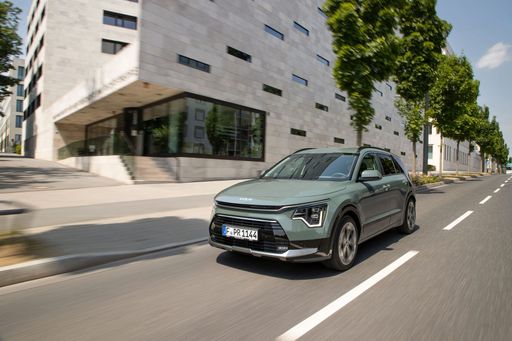 @ press.kia.com
@ press.kia.com
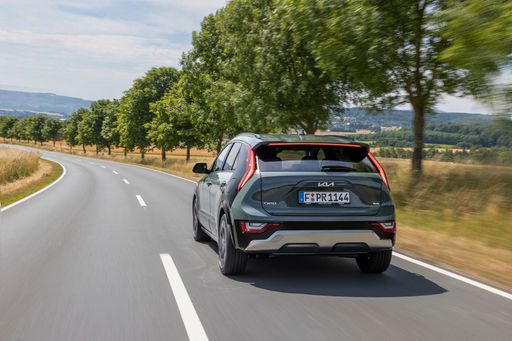 @ press.kia.com
@ press.kia.com
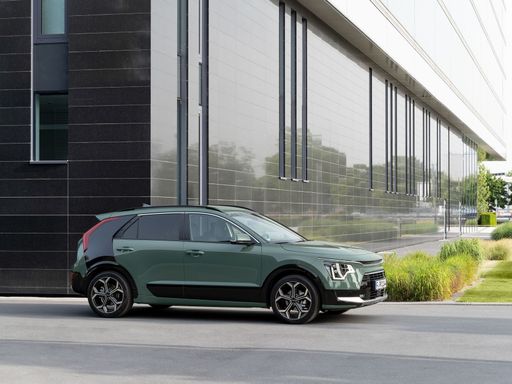 @ press.kia.com
@ press.kia.com
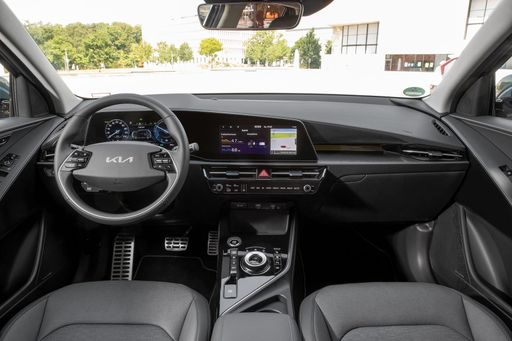 @ press.kia.com
@ press.kia.com
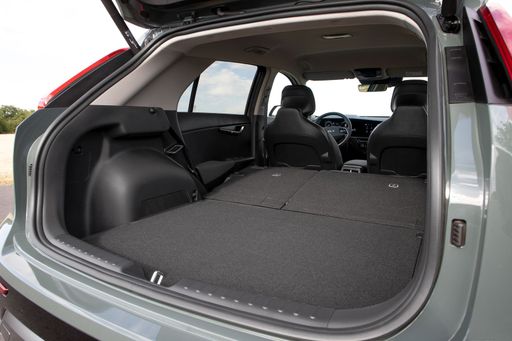 @ press.kia.com
@ press.kia.com
Mazda MX-30
The Mazda MX-30 is a compact crossover that combines unique design with an environmentally conscious approach. Its distinct exterior features a coupe-like silhouette and freestyle doors that offer practicality and style. Inside, the cabin boasts sustainable materials, creating a harmonious blend of modern aesthetics and eco-friendly innovation.
details @ de.mazda-press.com
@ de.mazda-press.com
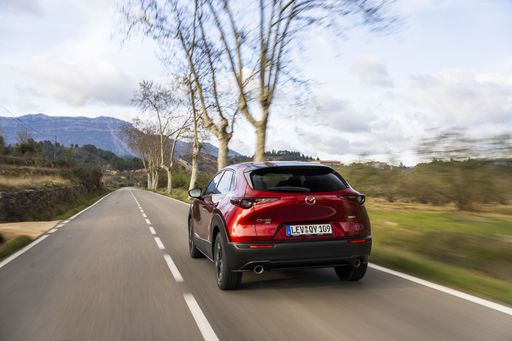 @ de.mazda-press.com
@ de.mazda-press.com
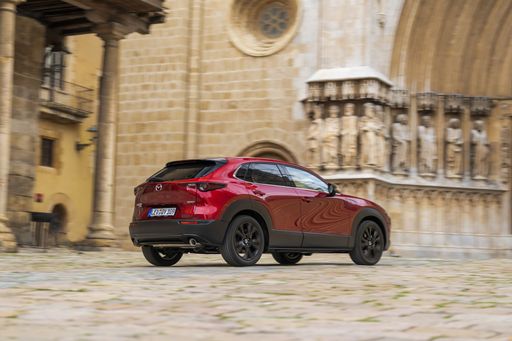 @ de.mazda-press.com
@ de.mazda-press.com
 @ de.mazda-press.com
@ de.mazda-press.com

|

|
|
|
|
Costs and Consumption |
|
|---|---|
|
Price
29100 - 38600 £
|
Price
30800 - 37100 £
|
|
Consumption L/100km
2.4 - 4.9 L
|
Consumption L/100km
-
|
|
Consumption kWh/100km
-
|
Consumption kWh/100km
18.30 kWh
|
|
Electric Range
57 - 62 km
|
Electric Range
85 km
|
|
Battery Capacity
1.3 - 11.1 kWh
|
Battery Capacity
-
|
|
co2
53 - 111 g/km
|
co2
22 g/km
|
|
Fuel tank capacity
37 - 42 L
|
Fuel tank capacity
-
|
Dimensions and Body |
|
|---|---|
|
Body Type
SUV
|
Body Type
SUV
|
|
Seats
5
|
Seats
5
|
|
Doors
5
|
Doors
5
|
|
Curb weight
1474 - 1594 kg
|
Curb weight
1849 kg
|
|
Trunk capacity
348 - 451 L
|
Trunk capacity
332 - 350 L
|
|
Length
4420 mm
|
Length
4395 mm
|
|
Width
1825 mm
|
Width
1848 mm
|
|
Height
1545 mm
|
Height
1555 mm
|
|
Max trunk capacity
1342 - 1445 L
|
Max trunk capacity
1137 - 1155 L
|
|
Payload
466 kg
|
Payload
402 kg
|
Engine and Performance |
|
|---|---|
|
Engine Type
Full Hybrid, Plugin Hybrid
|
Engine Type
Plugin Hybrid
|
|
Transmission
Automatic
|
Transmission
Automatic
|
|
Transmission Detail
Dual-Clutch Automatic
|
Transmission Detail
Reduction Gearbox
|
|
Drive Type
Front-Wheel Drive
|
Drive Type
Front-Wheel Drive
|
|
Power HP
138 - 180 HP
|
Power HP
170 HP
|
|
Acceleration 0-100km/h
9.9 - 11.4 s
|
Acceleration 0-100km/h
9.10 s
|
|
Max Speed
170 - 185 km/h
|
Max Speed
140 km/h
|
|
Torque
265 Nm
|
Torque
-
|
|
Number of Cylinders
4
|
Number of Cylinders
-
|
|
Power kW
102 - 132 kW
|
Power kW
125 kW
|
|
Engine capacity
1580 cm3
|
Engine capacity
830 cm3
|
General |
|
|---|---|
|
Model Year
2025
|
Model Year
2025
|
|
CO2 Efficiency Class
C, B
|
CO2 Efficiency Class
B
|
|
Brand
Kia
|
Brand
Mazda
|
Is the Kia Niro offered with different drivetrains?
The Kia Niro is available as Front-Wheel Drive.
The prices and data displayed are estimates based on German list prices and may vary by country. This information is not legally binding.
